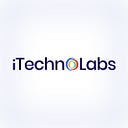A Guide to NMEA 2000 Communication Standard Protocol For Marine Radio
There was a time when a complete marine electronics system was analogous to a poorly run office. Each piece of equipment served its purpose, but they didn’t honestly communicate with one another. Here is where lack of communication within the marine segment caused huge losses. Not anymore! However, because of the technology known as NMEA 2000, modern marine equipment can seamlessly communicate with one another, providing you with more information and pleasure than ever before.
This amazing NMEA 2000 C has come into the limelight to help the marine sector overcome the defaults. NMEA 2000 Communication Standard Protocol is a communication standard that connects navigational instruments within vessels. The plug-and-play interface enables devices from various manufacturers to communicate within the same network without interfering. Please keep reading to learn about it in detail!
Brief Overview to NMEA 2000 Communication Standard Protocol
NMEA 2000 are plug-and-play communications protocols designed by NMEA that allow different manufacturers’ devices to connect. NMEA 2000 is a technology that will enable you to establish networks of instruments on board boats, allowing them to communicate with one another and providing the industry’s highest reliability standards. Not surprisingly, manufacturers of marine electronics, echo sounders, radar, GPS, and engines have opted to update their old proprietary protocols and have begun to make instruments with NMEA 2000 certification available.
The NMEA, which stands for National Marine Electronics Association, is a non-profit organization with over 500 members worldwide. Its purpose is to encourage navigation and, more importantly, to improve operational safety organization. How so? First and foremost, through developing and maintaining industry standards over time, as well as technical training. This mission involves sector producers, operators, public entities, private companies, and distributors working together in the public interest.
NMEA 2000 Communication Standard Protocol
NMEA 2000 is thus not the name of a firm or even a product: it is a communication protocol that allows any approved product to be linked to a data connection, i.e., a bus, to interact and discourse with other instruments. The first NMEA 2000-approved products were released in 2004, and the protocol is now recognized as a standard for marine data transfer by the Society of Automotive Engineers, or SAE. The bar is plug-and-play, meaning no additional configuration is required once the connection is made.
Why Should the Marine Sector Use NMEA 2000?
NMEA 2000 certification ensures the dependability and safety of certified products. One of its critical assets is its open architecture, which enables full and rapid interchange between motors, sensors, and instruments: a hitherto unattainable aim. This standard is the outcome of a collaborative effort that began in the second part of the 1990s and involved numerous operators in the field of marine electronics. Airmar Japan Radio Corporation, Metal Marine, Simrad, and Furuno were among the more than 10 companies participating.
How does NMEA 2000 operate: A Brief Guide
NMEA 2000, also known as NMEA2K or N2K, is a protocol for connecting devices using the Controller Area Network (CAN) technology initially designed for the automotive industry. NMEA 2000 is based on the high-level SAE J1939 protocol, although it defines its messages.
On the same physical network, NMEA 2000 devices and J1939 devices can coexist. NMEA 2000 is the serial data bus standard that replaces NMEA 0183. It features a substantially greater data rate (250k bits/second vs. NMEA 0183’s 4800 bits/second) and uses a compact binary message structure as opposed to NMEA 0183’s ASCII serial communications protocol. NMEA 2000 allows for a disciplined multiple-talker, multiple-listener data network, whereas NMEA 0183 calls for a single-talker, multiple-listener (simplex) serial communications protocol.
The NMEA 2000 network, like the SAE J1939 network on which it is based, is built on a bus topology that requires a single 120 termination resistor at either end of the bus (the resistors are parallel; thus, an adequately terminated bus should have a total resistance of 60). The maximum distance between any device and the bus is six meters, while the entire length of the backbone cable is 100 meters (328 ft).
NMEA 2000 allows for the networking of communication GPS, engines, monitors, alarms, and a nautical flow meter for consumption, among other things, all of which may be operated from a single system. The limitations of proprietary standards are clear because you must refer to only one brand. This is not a problem with NMEA 2000, which offers the advantage of linking goods from different companies united in a common language.
